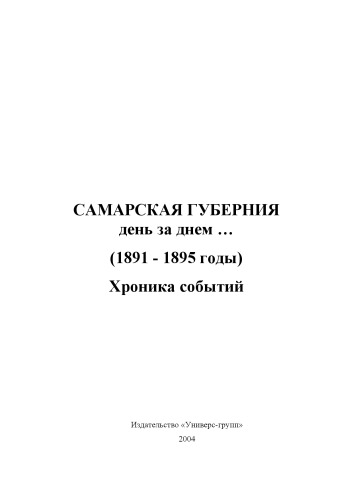- 2 402 202 книги
- Поиск
libcats.org









Hard Bop: Jazz and Black Music 1955-1965
the late David H. RosenthalDespite a lava flow of mediocre offerings, there have been a number of good books written on jazz over the years; the essays of Nat Hentoff, Gary Giddins and Stanley Crouch along with various histories and aesthetic treatises (Ralph Ellison and Albert Murray) enrich both our enjoyment and knowledge of this dynamic art form. While he has apparently published only one book on the topic, David H. Rosenthal's writing in "Hard Bop: Jazz and Black Music 1955-1965" exhibits a number of unique characteristics which demonstrate that he belongs in the same rarified company.
Rosenthal's calm and guileless enthusiasm, a combination of streetwise smarts and poetic sensitivity, allows him to venture intelligent observations without lapsing into mere opinion mongering. Aspects of the jazz subculture (and necessarily, the life of the black Americans within it) are discussed without recourse to reductionist political or sociological theories. Perhaps this can be attributed to Rosenthal's distance from day-to-day involvement in the "jazz industry"; the Chicago native's main gig is as a literary man (translator of Portuguese and Catalan literature). This comes through in "Hard Bop", from the masterful introduction (an exposition of its theme via the life and death of quintessential hard bopper Lee Morgan) to the closing chapters ruminating on the end of the era and the changes wrought in jazz since its passing.
Given hard bop's form, a synthesis of bebop's complexity with other influences (primarily, but by no means only, the earthier aspects of blues expression), it's fitting that Rosenthal's first chapter details the revolutionary musical changes initiated through late-night jam sessions at Minton's Playhouse, NYC. The leading figures who emerged from the ensuing period (1942-47) of creative ferment (Charlie Parker, Dizzy Gillespie, Thelonious Monk) are doubtless the forefathers of the younger musicians who became associated with hard bop. Sagaciously, Rosenthal cites the "seething intensity and brooding, obsessive side" of Bud Powell's playing and (often dark) compositions as stylistic elements from which hard bop would evolve. Further on, linking the music to the lifestyle, he points out that:
"To young beboppers, the new music was a banner of rebellion, filled with the excitement of discovery, turning jazz inside out and electrifying a musical language in danger of excessive codification. To `hipsters' it was an alternative lifestyle, pursued with varying degrees of fanaticism. At its most extreme, the world of bebop meant rejecting respectability in favor of a bohemian quest for strong sensations, for the aesthetic and spiritual."
Chapter 2 chronicles the rise of hard bop proper. As a new decade ushered in, bebop had declined and what came to be known as "cool jazz" was in ascendancy:
"Many of [bebop's] best practitioners were dead, others, like Charlie Parker, were in decline. R&B might be a source of new ideas, but it was too limited to satisfy jazz musicians as a regular context. Slowly- hesitantly at first and then more decisively- the outlines of a new, more emotionally expressive and more formally flexible style began to emerge in the music of Miles Davis, Clifford Brown, Sonny Rollins, Horace Silver, Art Blakey and others."
Detailed discussions of these and many other musicians (along with analysis of specific recordings) occur throughout the book: Jackie McLean's involvement in the Manhattan scene of artists and bohemians, Tommy Flanagan's recollection of the players that were active in his native Detroit (the list is mind-boggling), a section on the organ/tenor combo popularized by Jimmy Smith, a discussion of the innovators (Monk, Miles, Mingus, Coltrane) of what Rosenthal calls the "hard bop heterodoxy", and a particularly illuminating section ("The Power of Badness") on an important part of the jazz aesthetic that applies just as aptly to other forms of African-American musical expression.
One final extended example, which explains the origin (via critic Stanley Dance) of the term "mainstream" in the context of jazz music. While Dance used the term with reference to the Swing-era jazz (Ellington, Hines, Hawkins) created between traditional (New Orleans two-beat) and modern (bebop/cool) schools, Rosenthal points out that similarly:
"Hard bop was wedged in between two styles [bebop and free jazz] that were easier to define in a few sentences. As bebop turned into something broader and more flexible in the mid-fifties, and as a style known simply known as `modern jazz'- meaning it lacked bebop's readily identifiable characteristics but had absorbed its advances- took shape, people began talking about `mainstream modernism'. Jazz has always been a volatile music, changing quickly and often, and the hard bop period (like the heyday of Swing) represents a moment of balance and polish in the work of many musicians, with more emphasis on perfecting an existing style than on self-consciously breaking new ground. Yet neither period was one of stagnation. For one thing, the elegant equilibriums thus achieved cannot be sustained for long. Such styles generate their own pressures for radical change. In addition, the leaders of both Dance's `mainstream' and the modern-jazz one were eclectic in their approaches and therefore open to change- but by accretion rather than rupture. Duke Ellington, for example, went on evolving, absorbing new elements, and elaborating old ones, until the end of his life ... in this he was paralleled by the openness of musicians like Rollins and Coltrane to the beginnings of free jazz, as well as to developments within hard bop like the advent of modally based improvisation. Thus, the hard bop period, like the 'mainstream' one, was a time of both consolidation and expansion. Yet the exact nature of the shifts in perspective that brought jazz into a more diverse and expressive realm in the 1950's has eluded many jazz writers, who have been satisfied with clichés about soul, funk and `returning to roots'. Though the decade was a time of renewed interest among jazz musicians in blues and gospel, these were only two tinctures among many in a broadened musical palette that ranged from classical impressionism to the dirtiest gutbucket effects."
David H. Rosenthal's book is truly outstanding and well worth the jazz fans attention.
Rosenthal's calm and guileless enthusiasm, a combination of streetwise smarts and poetic sensitivity, allows him to venture intelligent observations without lapsing into mere opinion mongering. Aspects of the jazz subculture (and necessarily, the life of the black Americans within it) are discussed without recourse to reductionist political or sociological theories. Perhaps this can be attributed to Rosenthal's distance from day-to-day involvement in the "jazz industry"; the Chicago native's main gig is as a literary man (translator of Portuguese and Catalan literature). This comes through in "Hard Bop", from the masterful introduction (an exposition of its theme via the life and death of quintessential hard bopper Lee Morgan) to the closing chapters ruminating on the end of the era and the changes wrought in jazz since its passing.
Given hard bop's form, a synthesis of bebop's complexity with other influences (primarily, but by no means only, the earthier aspects of blues expression), it's fitting that Rosenthal's first chapter details the revolutionary musical changes initiated through late-night jam sessions at Minton's Playhouse, NYC. The leading figures who emerged from the ensuing period (1942-47) of creative ferment (Charlie Parker, Dizzy Gillespie, Thelonious Monk) are doubtless the forefathers of the younger musicians who became associated with hard bop. Sagaciously, Rosenthal cites the "seething intensity and brooding, obsessive side" of Bud Powell's playing and (often dark) compositions as stylistic elements from which hard bop would evolve. Further on, linking the music to the lifestyle, he points out that:
"To young beboppers, the new music was a banner of rebellion, filled with the excitement of discovery, turning jazz inside out and electrifying a musical language in danger of excessive codification. To `hipsters' it was an alternative lifestyle, pursued with varying degrees of fanaticism. At its most extreme, the world of bebop meant rejecting respectability in favor of a bohemian quest for strong sensations, for the aesthetic and spiritual."
Chapter 2 chronicles the rise of hard bop proper. As a new decade ushered in, bebop had declined and what came to be known as "cool jazz" was in ascendancy:
"Many of [bebop's] best practitioners were dead, others, like Charlie Parker, were in decline. R&B might be a source of new ideas, but it was too limited to satisfy jazz musicians as a regular context. Slowly- hesitantly at first and then more decisively- the outlines of a new, more emotionally expressive and more formally flexible style began to emerge in the music of Miles Davis, Clifford Brown, Sonny Rollins, Horace Silver, Art Blakey and others."
Detailed discussions of these and many other musicians (along with analysis of specific recordings) occur throughout the book: Jackie McLean's involvement in the Manhattan scene of artists and bohemians, Tommy Flanagan's recollection of the players that were active in his native Detroit (the list is mind-boggling), a section on the organ/tenor combo popularized by Jimmy Smith, a discussion of the innovators (Monk, Miles, Mingus, Coltrane) of what Rosenthal calls the "hard bop heterodoxy", and a particularly illuminating section ("The Power of Badness") on an important part of the jazz aesthetic that applies just as aptly to other forms of African-American musical expression.
One final extended example, which explains the origin (via critic Stanley Dance) of the term "mainstream" in the context of jazz music. While Dance used the term with reference to the Swing-era jazz (Ellington, Hines, Hawkins) created between traditional (New Orleans two-beat) and modern (bebop/cool) schools, Rosenthal points out that similarly:
"Hard bop was wedged in between two styles [bebop and free jazz] that were easier to define in a few sentences. As bebop turned into something broader and more flexible in the mid-fifties, and as a style known simply known as `modern jazz'- meaning it lacked bebop's readily identifiable characteristics but had absorbed its advances- took shape, people began talking about `mainstream modernism'. Jazz has always been a volatile music, changing quickly and often, and the hard bop period (like the heyday of Swing) represents a moment of balance and polish in the work of many musicians, with more emphasis on perfecting an existing style than on self-consciously breaking new ground. Yet neither period was one of stagnation. For one thing, the elegant equilibriums thus achieved cannot be sustained for long. Such styles generate their own pressures for radical change. In addition, the leaders of both Dance's `mainstream' and the modern-jazz one were eclectic in their approaches and therefore open to change- but by accretion rather than rupture. Duke Ellington, for example, went on evolving, absorbing new elements, and elaborating old ones, until the end of his life ... in this he was paralleled by the openness of musicians like Rollins and Coltrane to the beginnings of free jazz, as well as to developments within hard bop like the advent of modally based improvisation. Thus, the hard bop period, like the 'mainstream' one, was a time of both consolidation and expansion. Yet the exact nature of the shifts in perspective that brought jazz into a more diverse and expressive realm in the 1950's has eluded many jazz writers, who have been satisfied with clichés about soul, funk and `returning to roots'. Though the decade was a time of renewed interest among jazz musicians in blues and gospel, these were only two tinctures among many in a broadened musical palette that ranged from classical impressionism to the dirtiest gutbucket effects."
David H. Rosenthal's book is truly outstanding and well worth the jazz fans attention.
Популярные книги за неделю:

Проектирование и строительство. Дом, квартира, сад
Автор: Петер Нойферт, Автор: Людвиг Нефф
Размер книги: 20.83 Mb

Система упражнений по развитию способностей человека (Практическое пособие)
Автор: Петров Аркадий НаумовичКатегория: Путь к себе
Размер книги: 818 Kb

Сотворение мира (3-х томник)
Автор: Петров Аркадий НаумовичКатегория: Путь к себе
Размер книги: 817 Kb

Радиолюбительские схемы на ИС типа 555
Автор: Трейстер Р.Категория: Электротехника и связь
Размер книги: 13.64 Mb
Только что пользователи скачали эти книги:

Скаутский галстук
Автор: Верещагин Олег НиколаевичКатегория: Альтернативная история, О войне
Размер книги: 991 Kb

Field Guide to Urgent and Ambulatory Care Procedures
Автор: David M. James MdКатегория: Медицина
Размер книги: 310 Kb

Самарская губерния: день за днем: 1891-1895 годы. Хроника событий
Автор: Завальный А.Н., Автор: Кабытов П.С., Автор: Рыбалко Ю.Е.Категория: История
Размер книги: 1.54 Mb

Nanotechnology: Legal Aspects (Perspectives in Nanotechnology)
Автор: Patrick M. BoucherКатегория: Техника, Нанотехнологии
Размер книги: 3.88 Mb

Introduction to Potable Water Treatment Processes
Автор: Simon Parsons, Автор: Bruce Jefferson
Размер книги: 2.44 Mb





